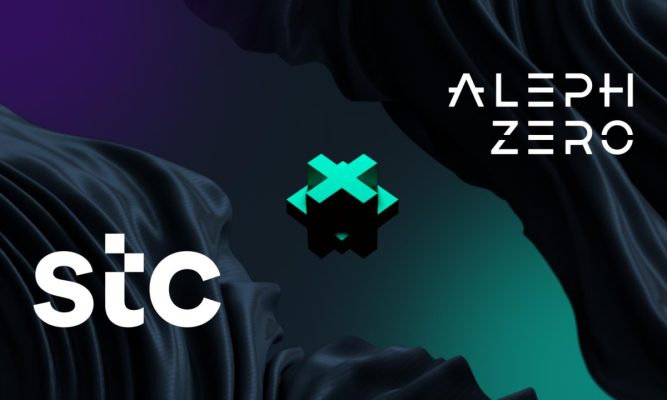Yield farming has become a major topic in crypto. With billions being locked into DeFi and crazy returns on investments, it was only a matter of time before this trend would become more and more popular.
So, what is DeFi?
First things first, DeFi stands for Decentralized Finance. It is an umbrella term for blockchain-run applications that function through smart contracts, with no third parties required, making them decentralized.
In many ways, DeFi works like traditional banking. For example, you can lend, borrow, earn interest, and trade assets faster and more securely. And since DeFi works peer-to-peer, no central entities are involved that can control the DeFi-application. Instead, the application is run using smart contracts.
A smart contract is an agreement written in code which takes effect automatically when specific conditions are met. And in DeFi, smart contracts lay the foundation of many protocols.
Take, for example, Uniswap, a popular Decentralized Exchange on the Ethereum network. On this decentralized exchange (DEX), you can trade any Ethereum based crypto without using a centralized platform.
In many ways, Decentralized Finance has been invented to improve and bring the advantages of the current financial model to crypto.
Why would crypto want that? Well, the economy has thrived for most of it in the modern world. And even if, during the financial crisis and the great recession, the balance sheet of many significant institutions turned red, the financial tools within the current system allowed for redressal and investments.
DeFi is now trying to cut itself loose from the current financial system by decreasing big institutions’ power. Decentralized Finance uses technology to separate the current centralized financial models, giving users better control over their assets regardless of age, identity, or ethnicity.
What is Yield Farming?
Now that you know the basics of DeFi, we can look at Yield farming. Yield farming is the staking or lending of crypto assets to generate a positive return on investment in cryptocurrency. Yield farming lets users lock up their crypto in smart contract-based liquidity pools.
Users get incentivized to add resources to a specific liquidity pool by being promised interest. These interests can differ from a percentage of the transaction fees to gaining more of a particular crypto coin or token (liquidity mining). In most cases, the liquidity pool’s return on investment is expressed in APY (Annual Percentage Yield) or APR (Annual Percentage Rate).
But what about Impermanent Loss?
While yield farming, your tokens are locked into a protocol (or smart contract) so that, in return, you will earn interest. The downside is, of course, the fact that you risk losing value on your assets. That’s what is called ‘impermanent loss.’
Impermanent loss means that the value of your cryptocurrency suddenly falls or rises while it is staked. And in some situations, the impermanent loss might get you to a point where instead of earning more the moment you withdraw your tokens, it could be that you would have been better off just holding your crypto and doing nothing.
Yes, the loss can be greater than the interest you earned. This is a problem that many yield farmers face. That’s why it is essential to read about the risk involved before using these protocols.
How does it work?
With Yield farming, liquidity providers deposit their funds into liquidity pools. This is mostly done on decentralized exchanges and costs the users a small fee. These fees will often be shared or paid out to the liquidity providers.
And this way, liquidity providers will be incentivized to deposit their funds on the DEX.
Yet, another incentive can be the distribution of new tokens, as in some cases, a certain amount can only be unlocked and earned through liquidity mining. The amount paid to the liquidity providers depends on the protocol on which it runs.
And as you can imagine, things can get very complex very fast. Since you can deposit your tokens on another protocol, you could theoretically borrow tokens from one DEX and use them to farm on another. Of course, we don’t recommend you do this as it comes with extra risks. Since all protocols run purely on code, a vulnerability could risk your funds.
Popular yield farming platforms particularities
Thanks to innovation, the most famous decentralized exchanges came to the public’s attention by filling an existing need in the market at the appropriate time. And although the goal is the same, there are quite a few particularities to each platform.
Uniswap
Uniswap is a decentralized exchange that offers swaps between thousands of Ethereum (ERC-20) tokens and allows users to provide liquidity in return for trading fees. Several assets on the Uniswap DEX offer you the opportunity to earn passive income through yield farming.
Some yield farming pools provide an annual percentage yield (APY) where you can earn even more than 75%.
Aave
Aave is one of the reigning DeFi kings regarding total value locked (TVL). At the time of writing, the protocol has a $4.5 billion TVL, despite the bear market. Like Uniswap, Aave is an Ethereum-based dApp that offers low-interest cryptocurrency borrowing.
Users can deposit funds into the protocol as collateral, allowing them to borrow a certain amount of crypto. Since your money will be deposited into a smart contract, the possibility of failure depends on the smart contract. If the smart contract is vulnerable, stored funds can be stolen.
Another risk Aavee users take is the threat of liquidation. A liquidation might happen if the health factor goes below 1. This might happen when the collateral decreases in value or the borrowed debt increases in value against each other. When you get liquidated, 50% of the borrower’s debt is repaid, and that value (plus a liquidation fee) will be taken from the collateral. After liquidation, your debt will be repaid.
PancakeSwap
Much like Uniswap, PancakeSwap is a Decentralized Exchange on which you can directly trade different assets. It is also possible to yield farm on this DEX. The PancakeSwap system runs on the Binance Smart Chain (BSC) network instead of Ethereum.
Furthermore, PancakeSwap is known for offering lottery’s, having an NFT marketplace, trading competitions, and more.
Additionally, the protocol has many gambling and/or gaming-focused features. However, even PancakeSwap imposes the same risks as Uniswap since it is a DEX, including impermanent loss.
Curve Finance
Curve Finance is a very well-known and trusted DEX with a TVL of $3.8 billion at the time of writing. Curve focuses specifically on stablecoins on the Ethereum network. It has a long list of stablecoin pools with decent returns pegged to fiat currency (mostly USD).
Stablecoin pools are especially safe if the tokens don’t lose their peg. Because their prices won’t change dramatically compared to each other, impermanent loss can be avoided entirely.
How are yield farming returns calculated?
Typically, the estimated yield farming returns are calculated annually and are expressed as Annual Percentage Rate (APR) or Annual Percentage Yield (APY).
The APR has a simple formula. If the APR is 10% and you invest $1000 dollars, your return after 365 days would be roughly $100.
APY is a different matter, though. Here, the daily rewards will also be included in the investment to generate more returns. The formula for this is APY= (1 + r/n )n – 1, where “r” is the stated annual interest rate and “n” is the number of compounding periods each year.
Always keep in mind that APR and APY can change very fast. The more people jump into a specific farm/pool, the lower the APR/APY. And since DeFi is a fast-moving market, this means that many farms will be booming one day and not so booming three months later.
Borrowing / Lending
Another possibility in DeFi is borrowing/lending. It allows crypto owners to use their assets as collateral to borrow more or lend out crypto to other users. For example: if you have 1 Bitcoin, you can borrow 0.5 Bitcoin (depending on the borrow rates, etc.) and use that to generate some extra revenue. On the other hand, you can lend your crypto to others and receive a dividend in return. It can be seen as a simple way to generate passive income for many people.
Since we are talking about DeFi, all these transactions are written in smart contracts, which means the contract will execute no matter what. Since people must ‘lock up’ their cryptos before borrowing, the risk of somebody stealing and credit defaulting is minimized. If the borrowing side of the contract cannot repay the debt, this user will lose the locked-up cryptocurrencies.
What are the risks of Yield Farming?
Of course, anything that sounds too good to be true is rarely true. That is why we must get through crypto borrowing or lending risks.
Typically, you need to put up collateral before borrowing some assets. So, if your collateral falls below a certain threshold (depending on the platform), your collateral may be liquidated. The only way to avoid this is by adding more collateral.
That means that you are either forced to invest more to keep your assets intact or get liquidated. Risks like this are often overlooked but can significantly hurt people.
Imagine investing $10.000, only to see that you have lost it all because you didn’t (or couldn’t) add any collateral.
Many platforms have created rules to counter this phenomenon that can minimize liquidation risk. Some platforms will ask you to overcollaterize. Basically, you will have to deposit more value than what you want to borrow, even 500% on some platforms for example.
Other risks involve the platform you use getting hacked, the smart contracts being broken, the protocol being a scam, or the platform going bankrupt.
In short, you can lose all the money invested in a protocol in the blink of an eye. Therefore, before entering any DeFi protocols, you must research it thoroughly and only invest what you afford to lose.
The takeaways
- Yield farming involves locking up your crypto assets in a pool to earn interest.
- Yield farming can be very profitable but can also cause financial losses.
- Since some protocols won’t let you ‘unlock’ the crypto assets instantaneously, a lot can happen in the volatile crypto market. Furthermore, users risk faulty smart contracts, hackers, and impermanent loss.
- So, before entering the DeFi space, we recommend you understand all the risks and opportunities involved.


